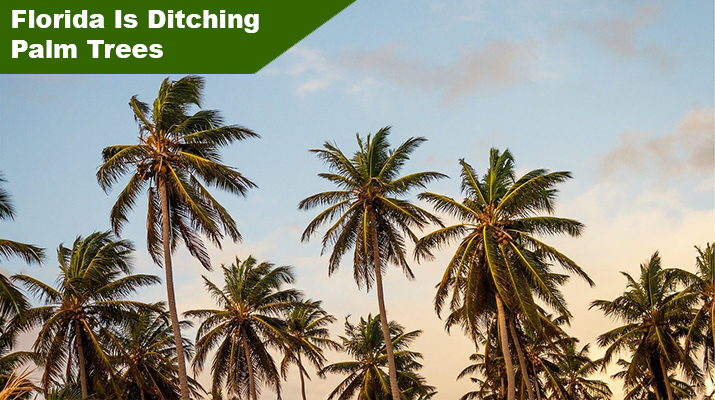Florida May Ditch Palm Trees To Help Fight Climate Change
Florida is thinking about replacing palm trees with trees that can absorb more carbon and create more shade in its residential areas. It’s true, if you drive through any city or town in Florida, you’re going to see a few palm trees. Yet, the benefits they offer are small.
In reality, they exist to paint a pretty picture for tourists. But with climate change continuing to worsen, it might be time to look for a better option. And that’s exactly what the sunshine state is doing.
To put it into perspective, one Live Oak absorbs the same amount of carbon as 147 palm trees.
Florida Palm Trees Are Not Actually Trees
This might sound ridiculous since “tree” is literally in their name, but palm trees are not actually trees. Talk about false advertisement.
Instead, scientists have labeled them as large woody herbs. And to back this up, palm trees lack a lot of features and characteristics that other trees display.
For example, palm trees do not have any bark or show any rings when the trees when cut.
They also do not contain any wood.
Instead, their inside is made up of continuous fibrous strands, which is the equivalent of grass. And this perfectly explains why palm trees are failing to absorb the same amount of carbon as other trees in Florida.
It’s Not Just About Climate Change
While climate change is a huge factor in this change, another angle to consider is the shade these trees give.
Trust me, if you’ve ever walked around Florida, you will find shade hard to come by. That’s because palm trees do a terrible job at providing any. It’s true that they excel at providing shade in compact areas, like a garden, but are not great in crowded areas.
And as most know, Florida is one of the hottest states in the United States. The shade offered to pedestrians or homes is insufficient. This could help cool off houses and lower the amount of air conditioning residential dwellings require.
Thus, lowering the amount of energy the state uses.
New Construction Projects Must Comply With A New Rule

It’s pretty normal that sometimes when constructing a new building that a tree or two might end up removed.
However, if that tree cannot be replanted on that site, the company must contribute to a fund that will see a tree planted in another part of Florida. It’s essentially a tree-planting project in Florida, by Florida.
It’s definitely a rule that every state should consider implementing.
Planting The Right Trees Is More Important Than Quantity
One of the biggest problems with mass tree planting is that sometimes, the right trees are not planted.
This can be for a variety of reasons.
For instance, perhaps a native tree requires a lot of attention until it reaches maturity, or it just costs a lot of money to do so. Or in the case of Florida, the tree has become part of the location’s identity.
Regardless of the reasoning, it’s a waste of land and resources when the correct trees are not planted. Kind of like trying to plant a Norfolk Pine outside in the state of Colorado.
The tropical tree might look nice, but it’s not suited for high-altitude and much colder climates.
Not only this, but younger trees can take years to mature, sometimes even decades. And while they are maturing, younger trees do not have the same carbon absorption as their adult selves.
Thus, sometimes the mathematics used by carbon offsets can be questionable at best.

Robert has been following and writing about environmental stories for years at GreenGeeks. He believes that highlighting environmentally friendly practices can help promote change in every household.
